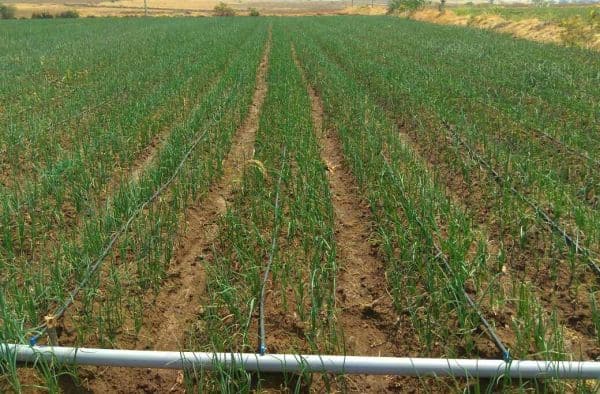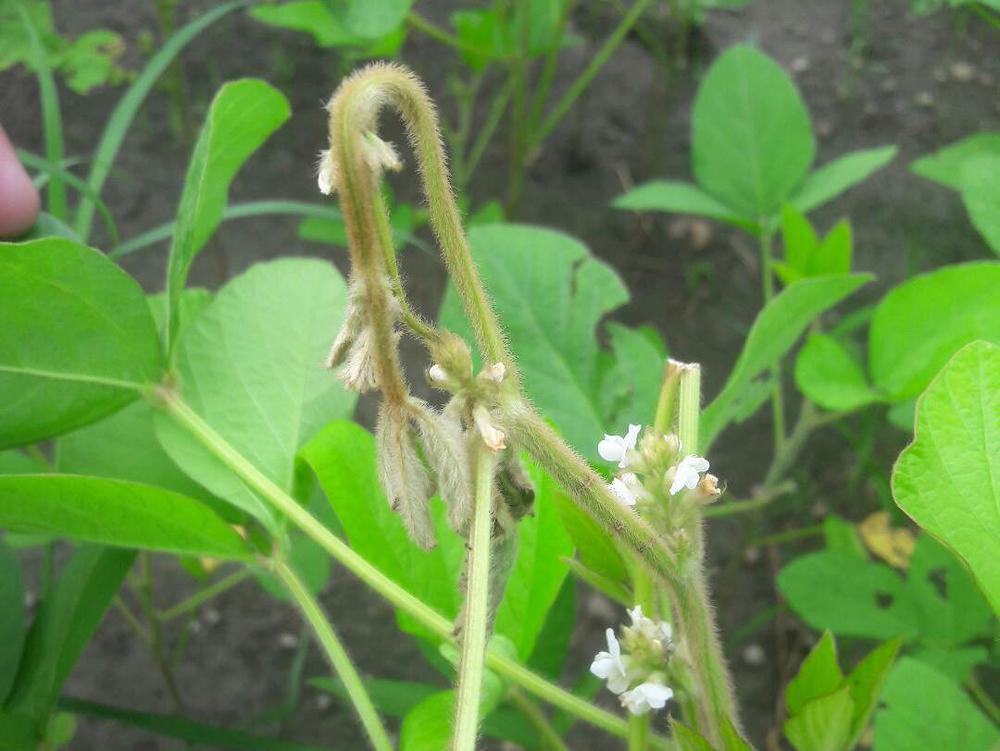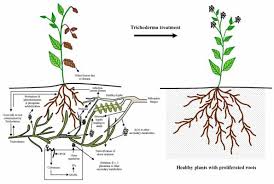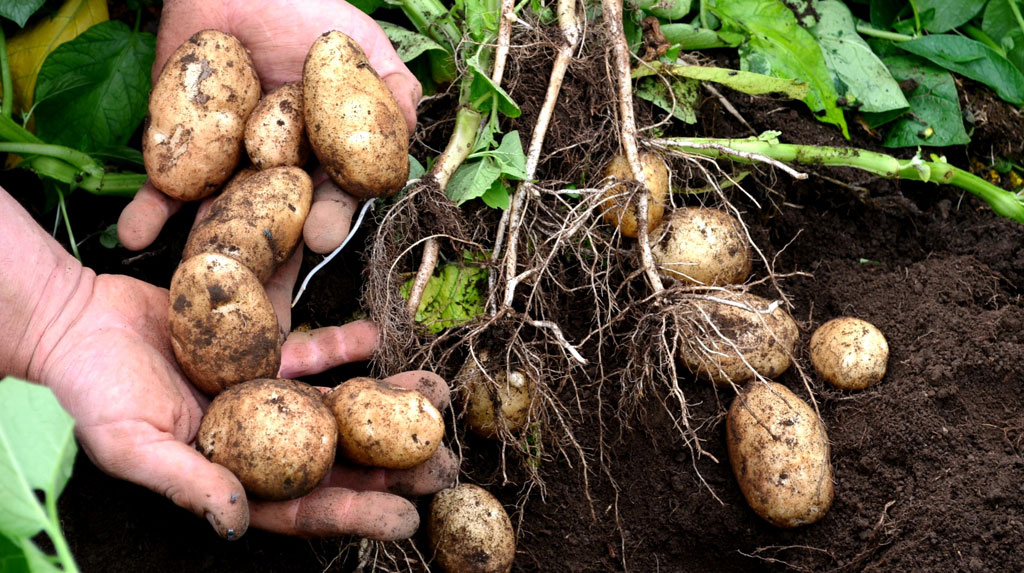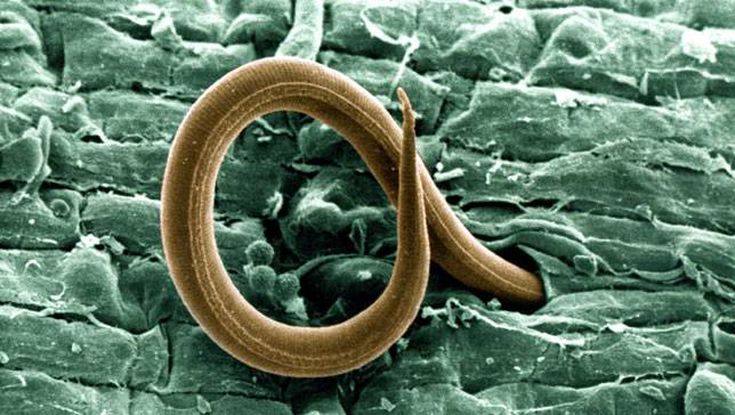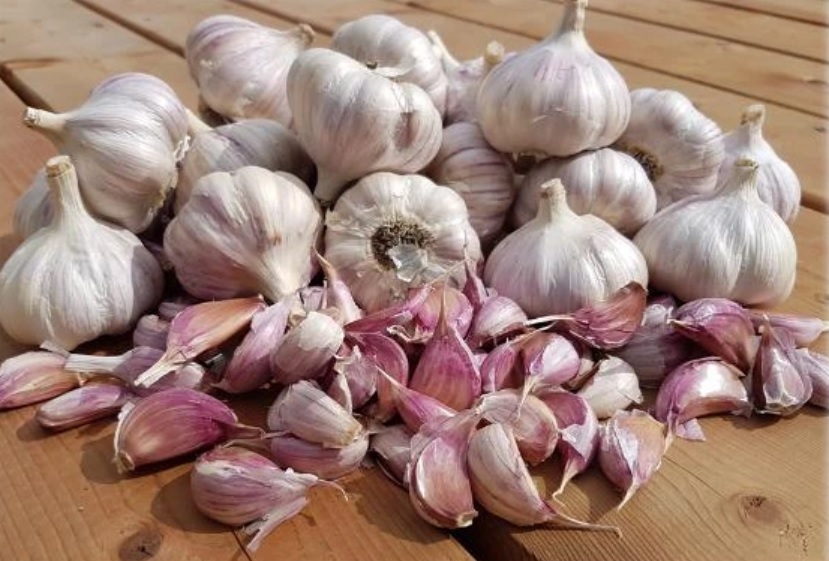Skip to content
- It is very important to spray management within seven days of onion nursery sowing.
- This spray is used for fungal diseases, control of insect and nutrition management.
- Onion nursery gets a good start with the help of this spray.
- Spray CARBENDAZIM 12% + MANCOZEB 63% @ 30 gram / pump for fungal diseases.
- For pest management, THIAMETHOXAM 25% WG @ 10 gram / pump.
- For Nutrition Management Spray Humic Acid @ 10gram / pump
Share
- Gramophone offers samriddhi kit for Rabi crops.
- This kit plays an important role in plant growth by converting essential nutrients found in soil into a soluble form.
- It eliminates harmful fungi found in soil and prevents damage to the plant
- This product is made of high-quality natural ingredients which helps in increasing the activity of microorganisms in the soil,
- It improves the pH of the soil and provides a good start to the roots ensuring its full development, which leads to good production of the crop.
- Improves soil structure, does not reduce the availability of nutrients in the soil, promotes root growth by improving nutrients through the root system
- It also increases absorption of nutrients from the soil by roots.
- It plays an important role in the development of crops by decomposing the crops residues in the field, turning them into useful manure.
Share
- This pest causes lots of damage to soybean crops.
- When the female Girdle beetle lays eggs inside the stem and after the eggs hatches, young beetles feed on the same stem and damage it.
- This makes the stem hollow, causing the nutrients to not reach the leaves, resulting in dried leaves, which affects the crop production.
- Mechanical Management: –
- Do deep plowing in an empty field during summer. Avoid sowing more dense crops.
- Do not use high nitrogenous fertilizers, if the infection is very high, use appropriate chemicals.
- Chemical Management: –
- LAMBDA CYHALOTHRIN 4.9 % CS @ 200 ml / acre or PROFENOFOS 40 % + CYPERMETHRIN 4% EC @ 400 ml / acre
- QUINALPHOS 25% EC @ 400 ml / acre or BIFENTHRIN 10 % EC @ 300 ml / acre
- THIAMETHOXAM 25% WG @ 100 gram/acre + FENPROPATHRIN 10% EC@ 400 ml / acre
- Biological Management: –
- BEAUVERIA BASSIANA @ 500 gram / acre
Share
- Trichoderma is a biological fungicide.
- It is a very effective biological tool for plant disease management,
- Trichoderma is a powerful biocontrol agent and is used extensively for soil-borne diseases such as Fusarium, Phytophthora, Sclerosis, etc.
- Trichoderma also acts as a growth agent, nematodes are also controlled if it is used as a protective form.
- It is also used for seed treatment, germination occurs very quickly by treating seeds, as well as protection from seed-borne diseases.
- Trichoderma is used as an effective controller of root rot, stem rot, wilt disease, etc.
Share
- Nitrogen bacteria is a very important bacteria for potato crops.
- The use of nitrogen bacteria as soil treatment before sowing brings great benefits to the crop.
- These bacteria live freely around the soil and plant roots and convert atmospheric nitrogen into nutrients and provide them with the plants.
- Nitrogen bacteria also produce hormones that increase the yield of potato plants, which aids in crop growth.
- Using these, the yield of the crop increases by 10-20 percent.
- This organic fertilizer can partially complete the nitrogen requirement of plants.
- About 15 to 20 kg of nitrogen per hectare can be saved by the use of nitrogen bacteria.
Share
- Gramophone offers samriddhi kit for Potato.
- This kit plays an important role in plant growth by converting essential nutrients found in soil into a soluble form.
- It eliminates harmful fungi found in soil and prevents damage to the plant
- This product is made of high-quality natural ingredients which helps in increasing the activity of microorganisms in the soil,
- It improves the pH of the soil and provides a good start to the roots ensuring its full development, which leads to good production of the crop.
- Improves soil structure, does not reduce the availability of nutrients in the soil, promotes root growth by improving the flow of nutrients through the root system
- It also increases absorption of nutrients from the soil by roots, promotes the activity of microorganisms in the soil
- Plays an important role in the development of crops by destroying the residues of old crops in the field and converting them into useful manure.
Share
- Use Gramophone exclusive samriddhi kit for better potato yield .
- This kit acts as a land reformer
- By combining the source of four essential bacterias, this kit will effectively help to utilize NPK fertilizers and help in the growth of the crop. Zinc solubilizes the insoluble zinc present in the soil and makes it available to the plants.
- This kit contains a biological fungicide Trichoderma viride, capable of preventing most of the soil-borne pathogens like root rot, stem rot, etc.
- This kit combines ingredients such as seaweed, amino acids, humic acid, and mycorrhiza. Which will significantly improve soil characteristics and quality, as well as mycorrhiza helps in the development of white roots. Humic acid helps in better vegetative growth of onion/garlic crops by improving the photosynthesis process.
- Composting bacteria decompose the previous crop residue in the field and convert it into beneficial fertilizer. This product increases the number of beneficial bacteria in the soil.
Share
- Nematodes are like very thin threads. Their body is long cylindrical and the whole body is without segment.
- The nematode stays inside the soil and keeps a lump in the roots of the crop and damages the crop.
- Biological treatment is the best solution to control this pest.
- Soil treatment is the best way to control this pest.
- chemical treatment :- Soil treat with CARBOFURAN 3 % GR @ 10 kg / acre
- Biological treatment:- soil treat at the rate of 50-100 kg FYM @ PAECILOMYCES LINACEOUS (Nematofree) @ 1 kg/acre should be broadcast in an open field.
- Whenever this product is used, make sure that there is enough moisture in the field.
Share

- Before the sowing of Garlic do the soil treatment for control of many soil insects. In an open field, mix 50- 100 kg FYM with METARHIZIUM ANISOPLIAE @ 1 kg culture and broadcast in the field, this helps in the control of soil-borne insects.
- Apart from this, other essential nutrient like urea @ 40 kg / acre + DAP @ 20 kg / acre + SSP @ 60 kg / acre + potash @ 40 kg / acre should be broadcast in the field before sowing
- All these elements are very important for good germination of garlic and should be applied in soil at the time of sowing.
- With this use Gramophone exclusive “ Garlic samriddhi kit ”
- This kit includes many products, such as consortia of NPK bacteria, zinc solubilizing bacteria, Trichoderma viride, humic acid, seaweed, amino acids, and mycorrhiza.
- With combining all these products, Garlic samriddhi kit has been prepared. The total weight of this kit is 3.2 kg which is sufficient for one acre.
- Mix this kit with 50-100 kg FYM before sowing and broadcast it in field
- This kit provides all the necessary nutrients to the garlic crop.
Share
- Garlic crop is a very important crop for farmers
- If seed treatment is done before sowing, then the crop can be protected from many fungal diseases, as well as the crop gets a good start.
- Seed treatment is done by two methods.
- Chemical treatment: – Before sowing, treat onion seeds with CARBENDAZIM 12% + MANCOZEB 63% @ 2.5gram / kg seed or CARBOXIN 17.5%+ THIRAM 17.5% @ 2.5g / kg seed.
- Biological treatment: -TRICHODERMA VIRIDE @ 5 gram / kg + PSB @ 2 gram / or PSEUDOMONAS FLUORESCENS @ 5 gram / kg seeds.
Share

